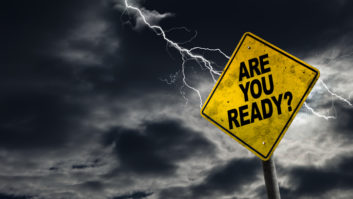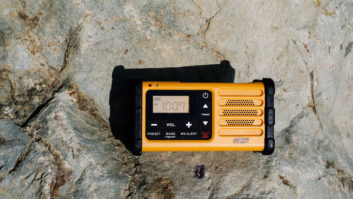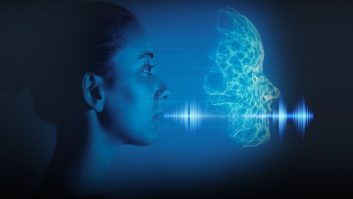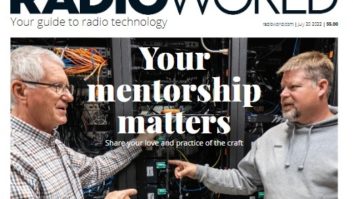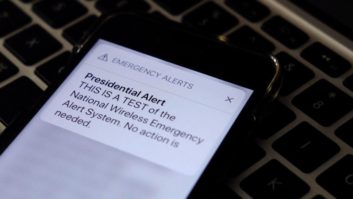With the advent of the 9V battery-powered transistor radio in the 1950s, the “Emergency Radio” was born.
Unlike vacuum tube receivers with heavy batteries or unpowered crystal radios, these handheld AM portables were small and simple enough to keep in a drawer. They could then be retrieved whenever man-made or natural disasters knocked out the power, providing listeners with lifeline connections to news, weather and relief information.
Since that time, emergency radios have evolved into multi-functional information/survival platforms. Models made by manufacturers such as C. Crane, Eton Corp., Kaito Electronics, RunningSnail and Sangean, among others, offer so many useful features — including AM/FM/Weather bands, hand-crank and solar rechargeable batteries, and built-in flashlights — that they have become the Swiss Army knives of radio receivers.
What inspired the change
According to people who design and manufacture emergency radios, it was the Baygen Freeplay Wind Up Radio that transformed this industry’s technological thinking in the 1990s.
It was based on a clockwork-powered electrical generator developed by U.K. inventor Trevor Baylis. The generator was driven by a hand-cranked internal spring that, when fully wound, could run the radio for up to 30 minutes. Baylis invented this power source so that people in Africa could have access to health information about AIDS.
“It was the Freeplay Wind Up Radio that spurred my interest in emergency radios,” said Walter Zhao, founder and owner of Kaito Electronics.
“I improved this approach by studying hand-cranked electrical generators used by the Chinese army and using this technology to recharge batteries within emergency radios, rather than relying on a spring,” he said.
“With a clockwork radio, the power dies as soon as the spring is fully unwound. With a hand-cranked generator that tops up rechargeable batteries, you don’t have this problem. My first emergency radio to use this technology was the Kaito AM/FM DP-970.”
California-based C. Crane carried the Freeplay Radio but also developed its own model, the battery-powered CC Radio with AM, FM, Weather Band and NOAA Weather Alert, in 1992 after experiencing three large earthquakes in 17 hours.
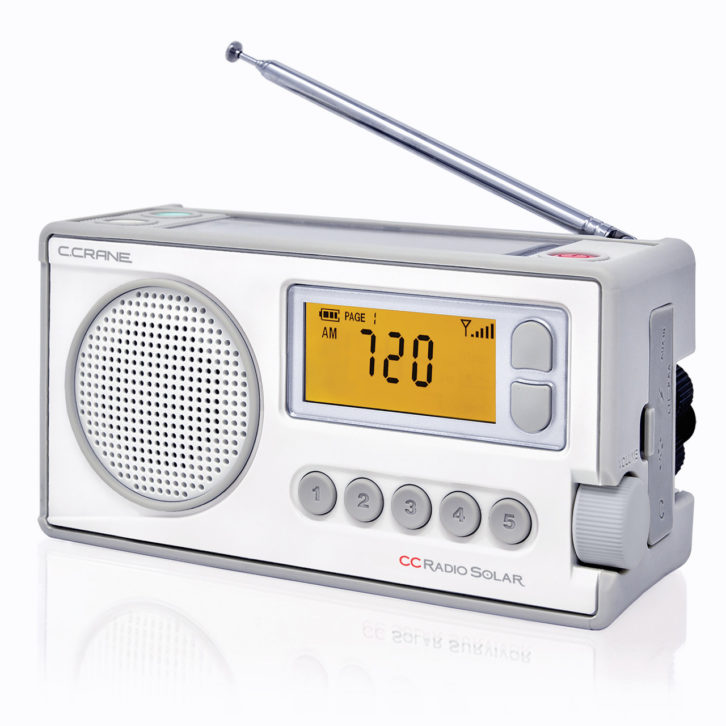
“Communication and services, including electricity, were hopelessly overloaded,” said founder Bob Crane. “We vowed to make a good emergency radio so we would never be in this situation again.”
Joining them in this space was Eton Corp.
“We started making emergency radios 30 years ago and selling them to households across the country,” said Esmail Amid-Hozour, founder and CEO. “The first radio we made was the AM/FM/Shortwave (SW) FR200 with a built-in LED flashlight. We have now developed the ninth generation of this radio.”
[Check Out More Products at Radio World’s Products Section]
As sophisticated emergency radios caught on, other manufacturers entered the market.
“We started to design and manufacture emergency radios in the early 2000s as a response to the tragic incidents and natural disasters that have occurred globally during that time, starting with the hand-cranked AM/FM MMR-77 with built-in illumination light,” said Andrew Wu, Sangean’s marketing manager.
“Our target markets were consumers in the United States and Europe.”
Sheldon Wu, sales representative with RunningSnail, said, “We believe everyone deserves to survive in a natural disaster. Therefore, we began to research and produce emergency radios in 2013. The first RunningSnail emergency radio was the MD-088, which comes with AM/FM/NOAA, 1000 mAh battery, LED flashlight, solar panels and hand-cranked generator.”
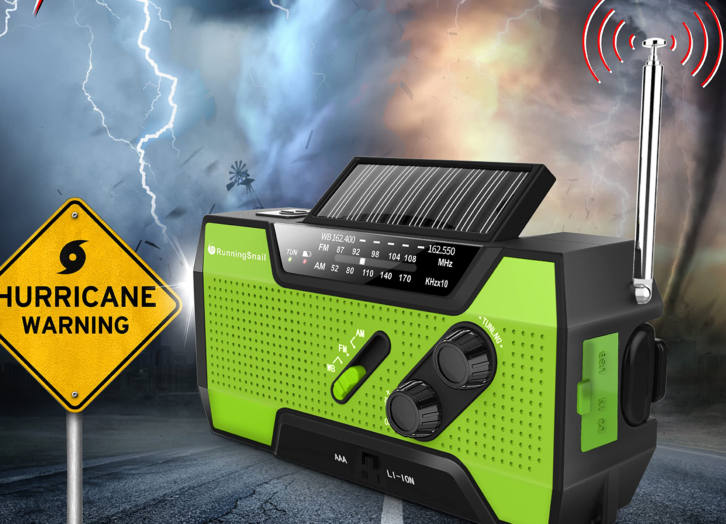
Parade of innovations
The evolution of emergency radios has been a parade of never-ending innovations, many of them developed by Kaito’s Walter Zhao. “In 1999, we were the first company to put a solar panel on the top of the radio,” Zhao said. “The power generated wouldn’t do much more than maintain a very low charge in the battery, but at least solar power could keep it from going dead.”
But Kaito isn’t the only innovator. “When we first carried the Baygen Freeplay, we modified it to add an LED light, which is now a standard feature for wind up radios,” said C. Crane CEO Jessica Crotty.
“The other improvements that have occurred over the years include better reception and audio quality in addition to solar power generation capacity, longer-running rechargeable batteries, brighter LED flashlights, and now the ability to charge smartphones.”
Said Eton’s Amid-Hozour, “We started with a very basic weather radio. We then added more battery capacity, better dynamos, solar power, smartphone-charging capability, IPX4 standard weather resistance, Bluetooth capability, increased battery size to charge tablets, ambient lights in addition to the original flashlight, and NOAA Specific Area Message Encoding (SAME) technology.”
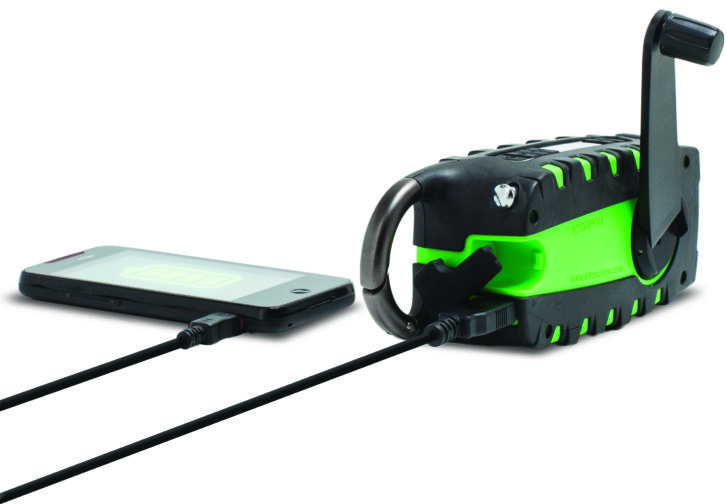
At Sangean, said Andrew Wu, “Initially our priority was to provide handheld radios with a hand crank to power up the device and receive broadcast news in emergency situations. In the following generations, we added more ways to power up the device such as a solar panel and USB ports, and upgraded the rechargeable batteries. A flashlight with different modes, digital tuning and clock features were also included for more versatile everyday usage along with Weather Alert functions.”
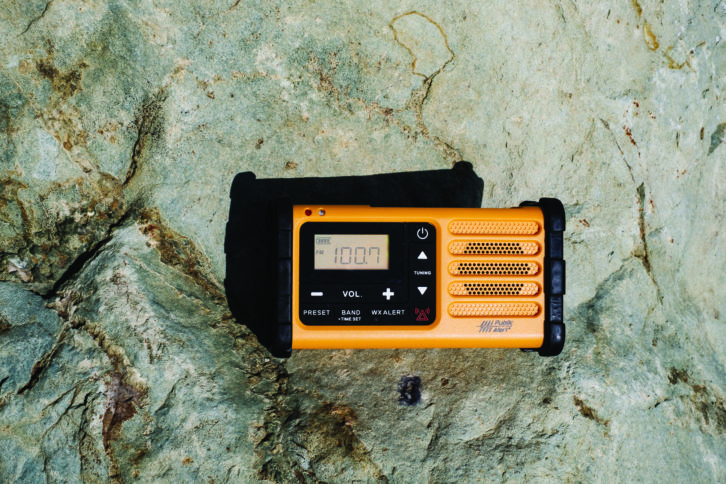
Sheldon Wu said RunningSnail is “constantly optimizing and upgrading our product functions to better respond to emergency situations. For example, we have added a Weather Alert Function, allowing monitoring weather alerts 24 hours a day to protect you and your family even if you are sleeping. We also added SOS Alarm Function, to set off a very loud alarm that easily catches others’ attention to ask for help.”
Kaito Electronics appears to offer the most features found on emergency radios. In addition to all of the features mentioned above, the AM/FM/SW/Weather Kaito Emergency Radio Voyager Max KA900 comes with dual speakers and stereo sound reproduction, a built-in MP3 player and audio recorder, and telephone-style direct-entry keypad for selecting stations. You can even load .txt files onto an SD card, put it into the KA900’s SD card slot, and read them on the radio’s monochrome LCD screen.
“If you want to read an ebook on your KA900, you can,” Zhao said.
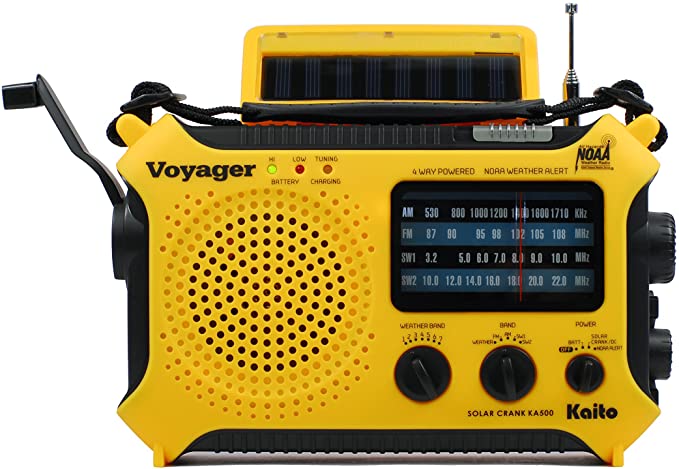
flashlight and reading lamp.
[Sign Up for Radio World’s SmartBrief Newsletter]
Of these many, many features, it is the ability to recharge smartphones that is driving emergency radio innovation. This is why manufacturers keep increasing the size and power capacity of these radios’ rechargeable batteries, to provide users with longer smartphone use during emergencies.
“We deeply know that a dead phone can be life-threatening,” said RunningSnail’s Sheldon Wu. “This is why we are upgrading our original 1000 mAh batteries to 4000 mAh or 6000 mAh.”
What’s next
According to manufacturers, sales of emergency radios tend to rise and fall in response to world events. For instance, “The demand for emergency radios increased due to the pandemic,” said Andrew Wu.
Manufacturers intend to continue to innovate. Walter Zhao wants to add an Alert FM emergency messaging receipt display to Kaito’s high-end emergency radios. “Our R&D department is already working on this application,” he said. Other manufacturers told us they continue to look for new features and improvements.
The unpredictable chaos of modern life is the ultimate sales argument for buying an emergency radio. “It’s always smart to be prepared, especially in areas that are more prone to natural disasters,” Andrew Wu said. “A quick charge, enough for a phone call, can make all the difference in the world.”





